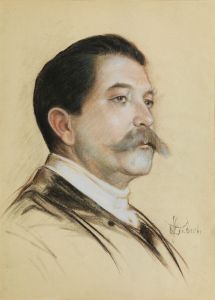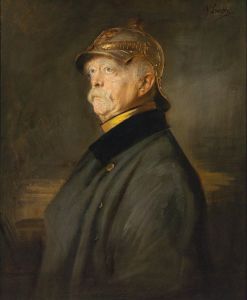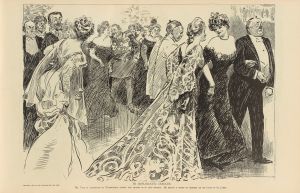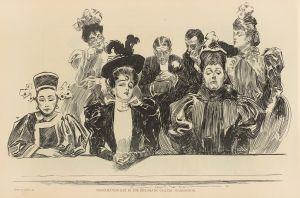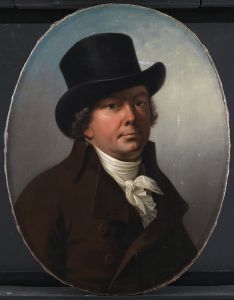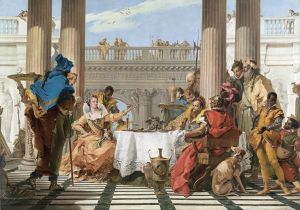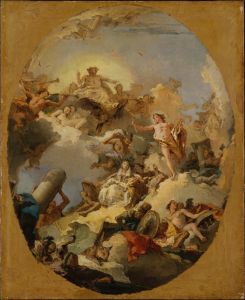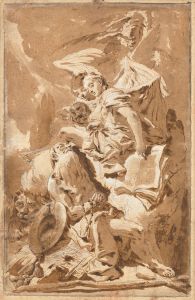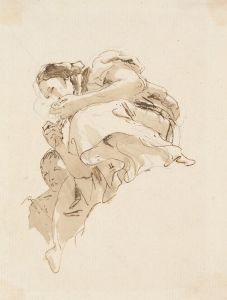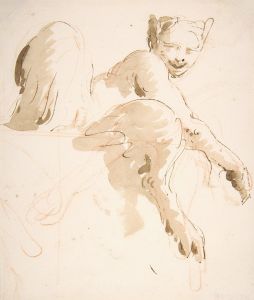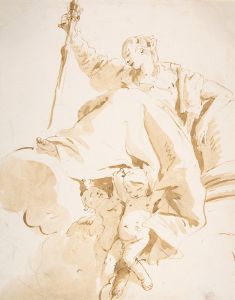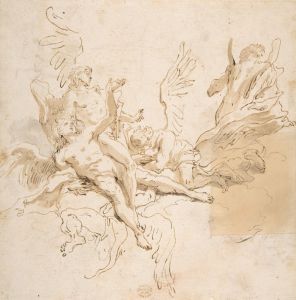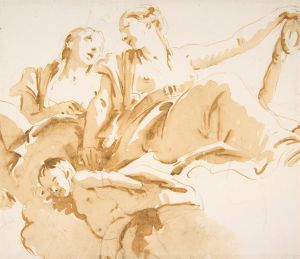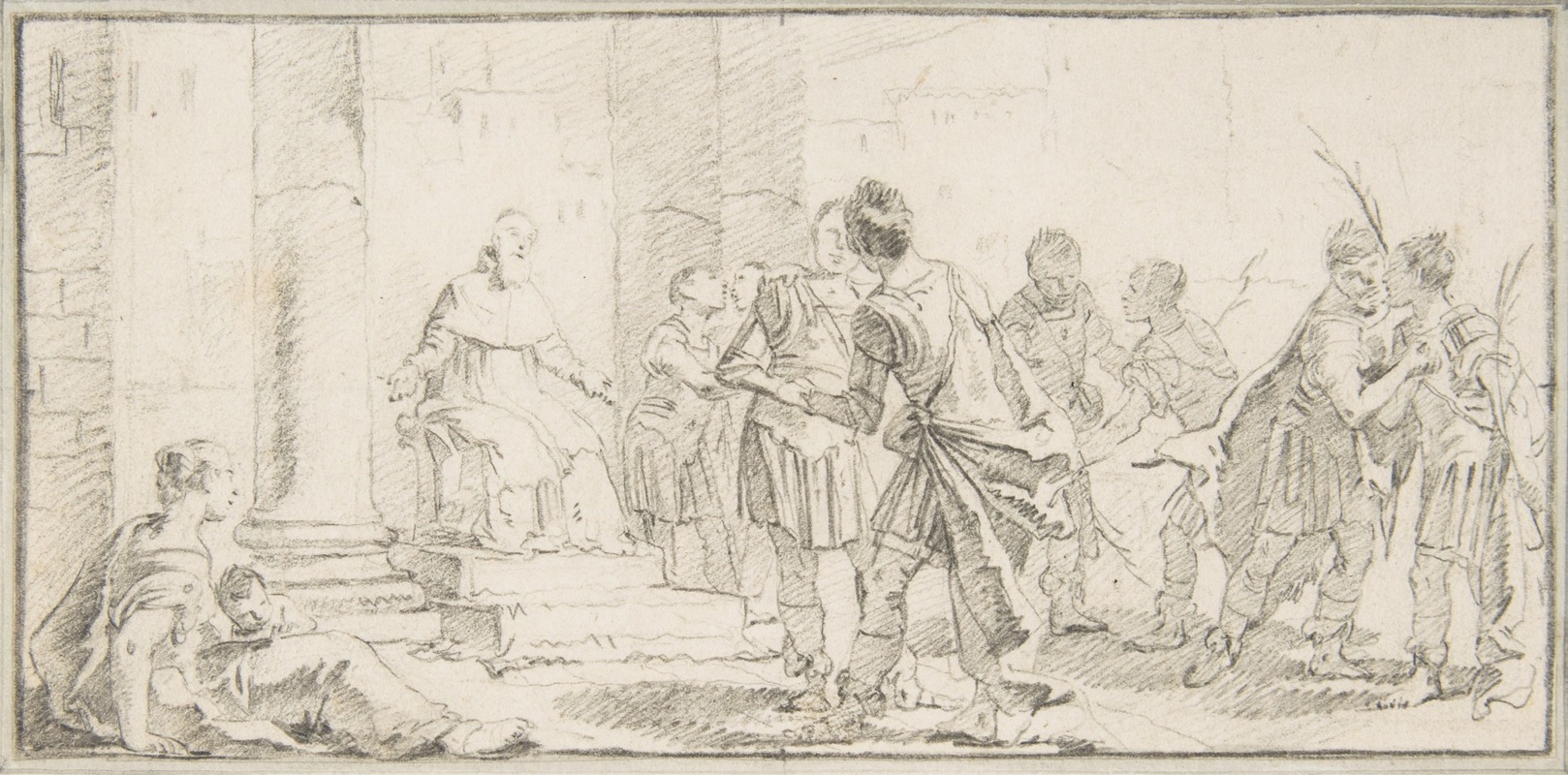
Scene of Peacemaking
A hand-painted replica of Giovanni Battista Tiepolo’s masterpiece Scene of Peacemaking, meticulously crafted by professional artists to capture the true essence of the original. Each piece is created with museum-quality canvas and rare mineral pigments, carefully painted by experienced artists with delicate brushstrokes and rich, layered colors to perfectly recreate the texture of the original artwork. Unlike machine-printed reproductions, this hand-painted version brings the painting to life, infused with the artist’s emotions and skill in every stroke. Whether for personal collection or home decoration, it instantly elevates the artistic atmosphere of any space.
Giovanni Battista Tiepolo, an Italian painter and printmaker, is renowned for his grandiose and imaginative frescoes that epitomize the Rococo style. One of his notable works is "Scene of Peacemaking," a painting that exemplifies his mastery in creating dynamic compositions filled with vibrant colors and dramatic lighting.
"Scene of Peacemaking" is a testament to Tiepolo's ability to capture complex narratives and emotions through his art. Although specific details about the painting's commission, date, and current location are not widely documented, it is consistent with Tiepolo's thematic focus on historical and allegorical subjects. His works often depicted grand historical events, mythological scenes, and religious narratives, all characterized by a sense of movement and theatricality.
Tiepolo was born in Venice in 1696 and became one of the most prominent painters of the 18th century. His artistic style was heavily influenced by the Venetian tradition, particularly the works of Paolo Veronese and Tintoretto, which is evident in his use of color and light. Tiepolo's frescoes and canvases are celebrated for their airy compositions and the illusion of space, which he achieved through his expert use of perspective and foreshortening.
In "Scene of Peacemaking," Tiepolo likely employed his signature techniques to convey a narrative of reconciliation and harmony. His ability to depict human figures with grace and expressiveness would have been central to the painting's impact, drawing viewers into the story being told. The use of light and shadow would have added depth and drama to the scene, enhancing the emotional resonance of the moment captured.
Tiepolo's work was in high demand across Europe, and he received numerous prestigious commissions throughout his career. His frescoes can be found in palaces, churches, and villas, including the Würzburg Residence in Germany and the Royal Palace of Madrid. These works showcase his skill in creating large-scale compositions that integrate seamlessly with architectural spaces, a talent that would have been evident in "Scene of Peacemaking" as well.
Despite the lack of specific information about "Scene of Peacemaking," Tiepolo's legacy as a master of the Rococo style is well-established. His influence extended beyond his lifetime, impacting artists and movements that followed. Tiepolo's ability to blend narrative depth with decorative elegance made his works enduringly popular and appreciated for their artistic and historical significance.
In summary, while detailed information about "Scene of Peacemaking" is limited, the painting is undoubtedly a reflection of Giovanni Battista Tiepolo's artistic prowess and his contribution to the Rococo movement. His work continues to be celebrated for its beauty, complexity, and the skillful way it captures the imagination of viewers.





